How To Install My PetSafe® Big Cat Door
Important Information
- These instructions are for a non-glass door. If you are installing in a glass door, please visit our article How to Install My PetSafe® Big Cat Door in Glass.
- This door is designed to be installed in most interior and exterior doors 1 to 2 inches (25 to 51 mm) thick.
When you first open the box, do not throw away any included cardboard/paper pieces, these are used during installation.
What Is Included
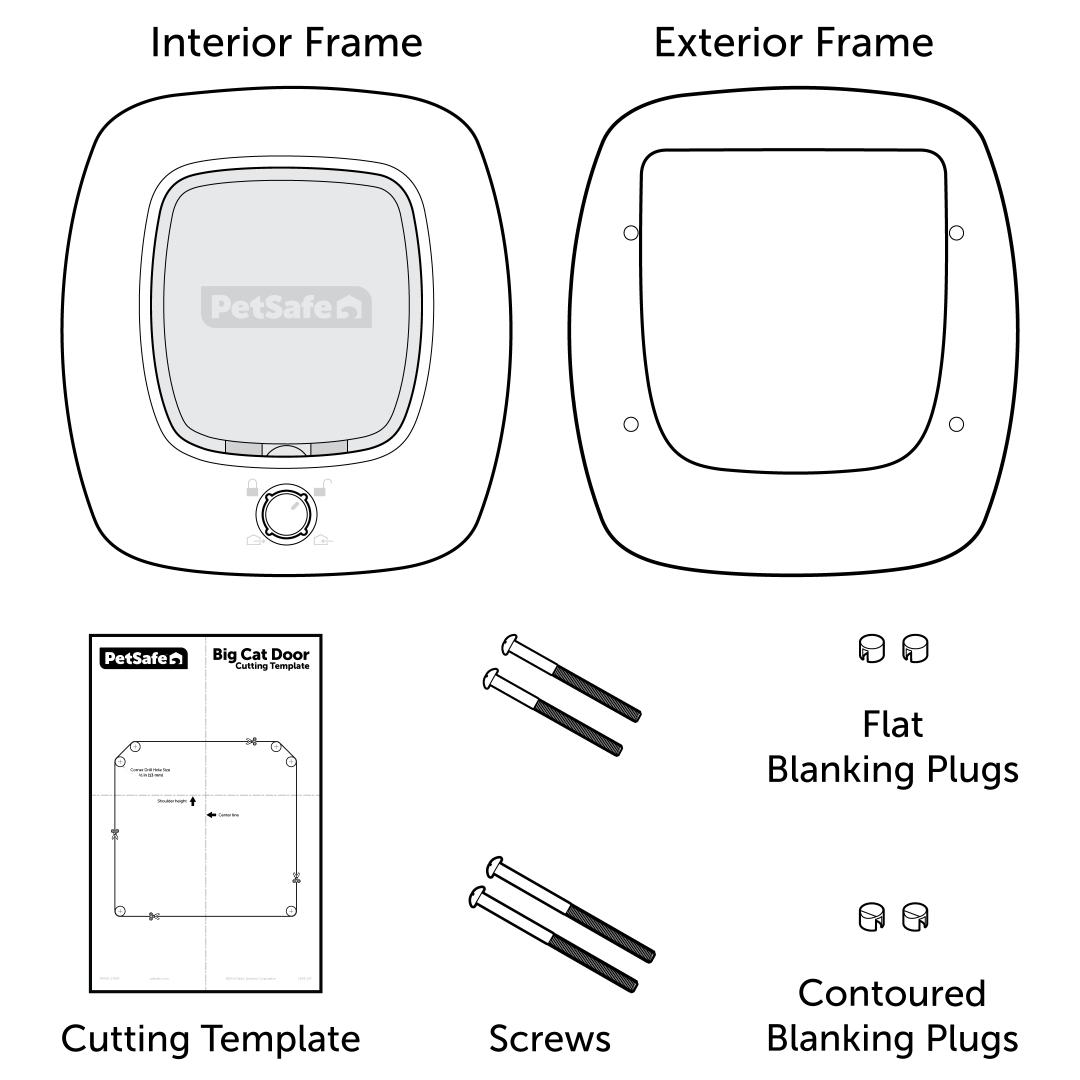
- Interior Frame with Flap and 4-Way Lock
- Exterior Frame
- Screws
- Contoured Blanking Plugs
- Flat Blanking Plugs
- Cutting Template
Tools You Will Need
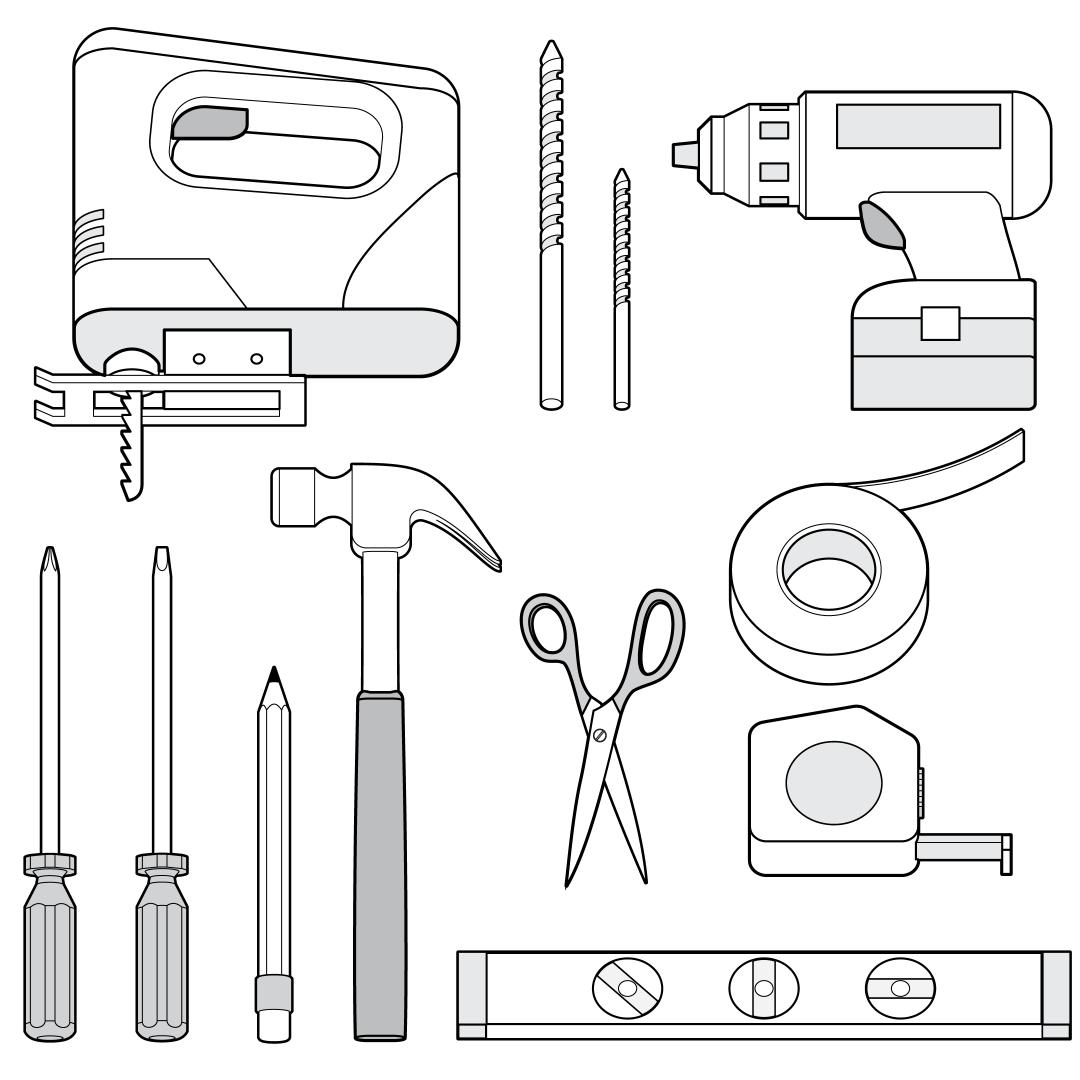
- Hammer
- Jigsaw and blade that is 1” thicker than the door you are installing in
- Drill
- Drill Bit: ½ inch
- Drill Bit: ⅛ inch
- Level
- Scissors
- Pencil
- Masking Tape
- Tape measure
- Safety Equipment
- Philips screwdriver
- Flathead screwdriver
- Exterior-grade caulk.
Measure Your Cat
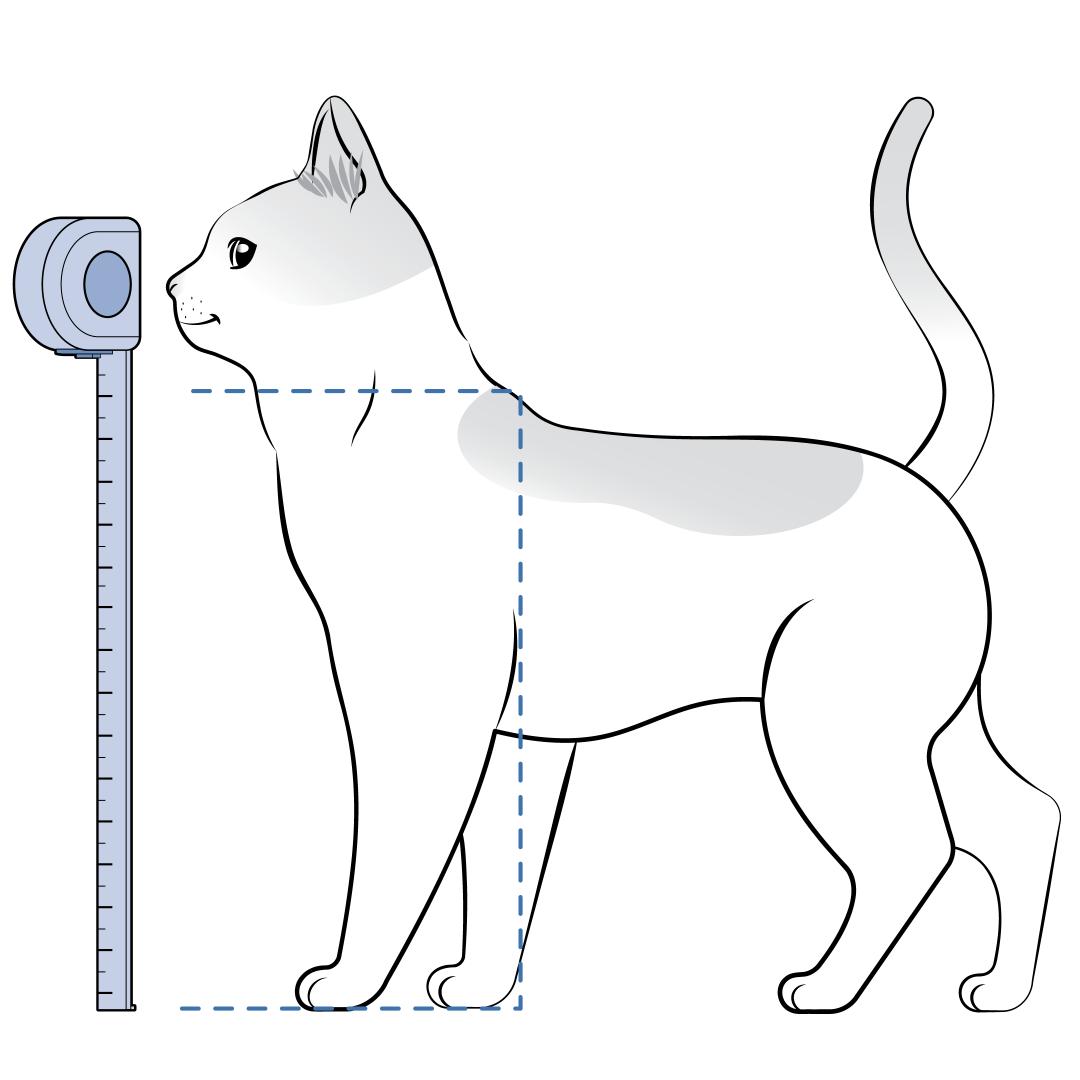
Measure and mark your cat’s shoulder height on the door with a pencil using either method:
- Have your cat stand next to the door and mark their shoulder height.
- Use a measuring tape to measure your cat from the floor to their shoulder while standing on all fours. Then apply that measurement to the door.
Use a level to draw a horizontal line through the height marking to extend the line at least 5 inches (125mm) in both directions.

Decide where on your door to install the cat door.
- The cat door does not have to be installed in the center of your door. You may choose to adjust it to the left or right. However, to maintain the structural integrity of your door make sure the cutting template is at least 3 inches (76.2mm) from the edge of the door on all sides.
- If you are installing it in a paneled door, align it within a panel for ease of installation.
Use a level to draw a vertical line at least 3 inches longer than measured for the cat door to be centered on. If you are placing the cat door centered on your door, draw a vertical line for the center of your door.
Place the Template
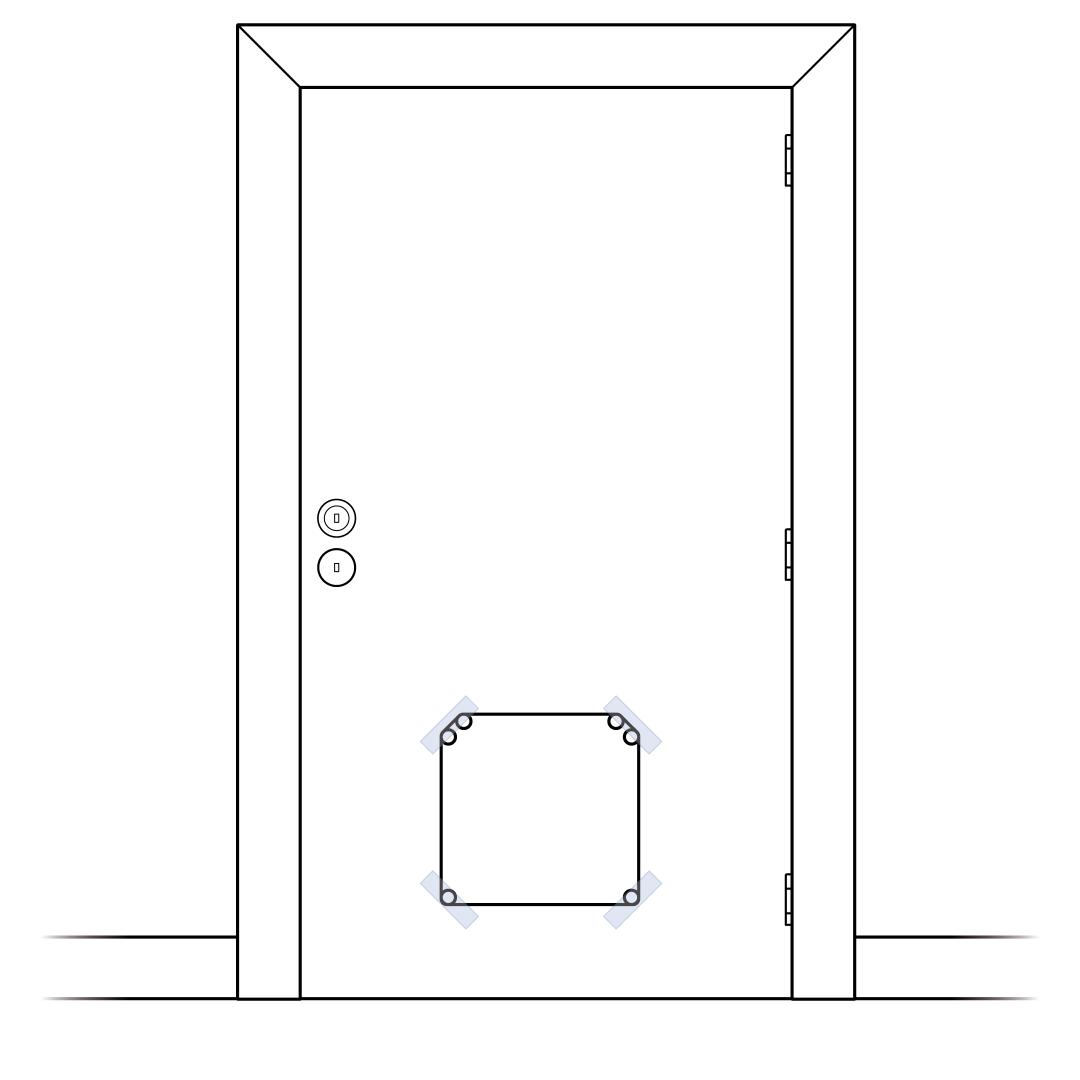
Cut out the template and tape it on your door, aligning the height and center lines you marked to the ones on the template.
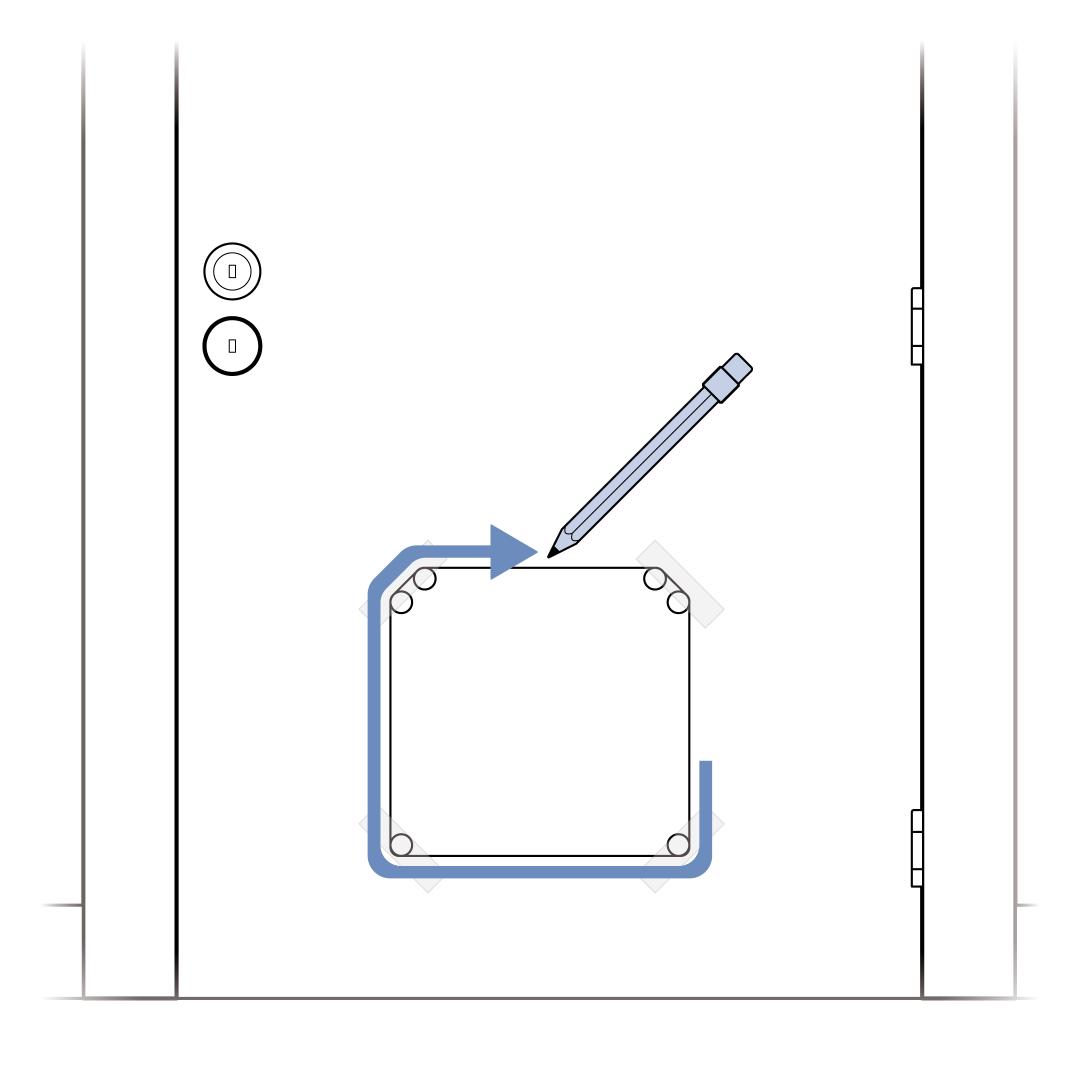
Use a pencil to trace the outside of the cutting template. Make sure the cutting line is clearly marked on the door and the corners are connected.
Prepare the Door
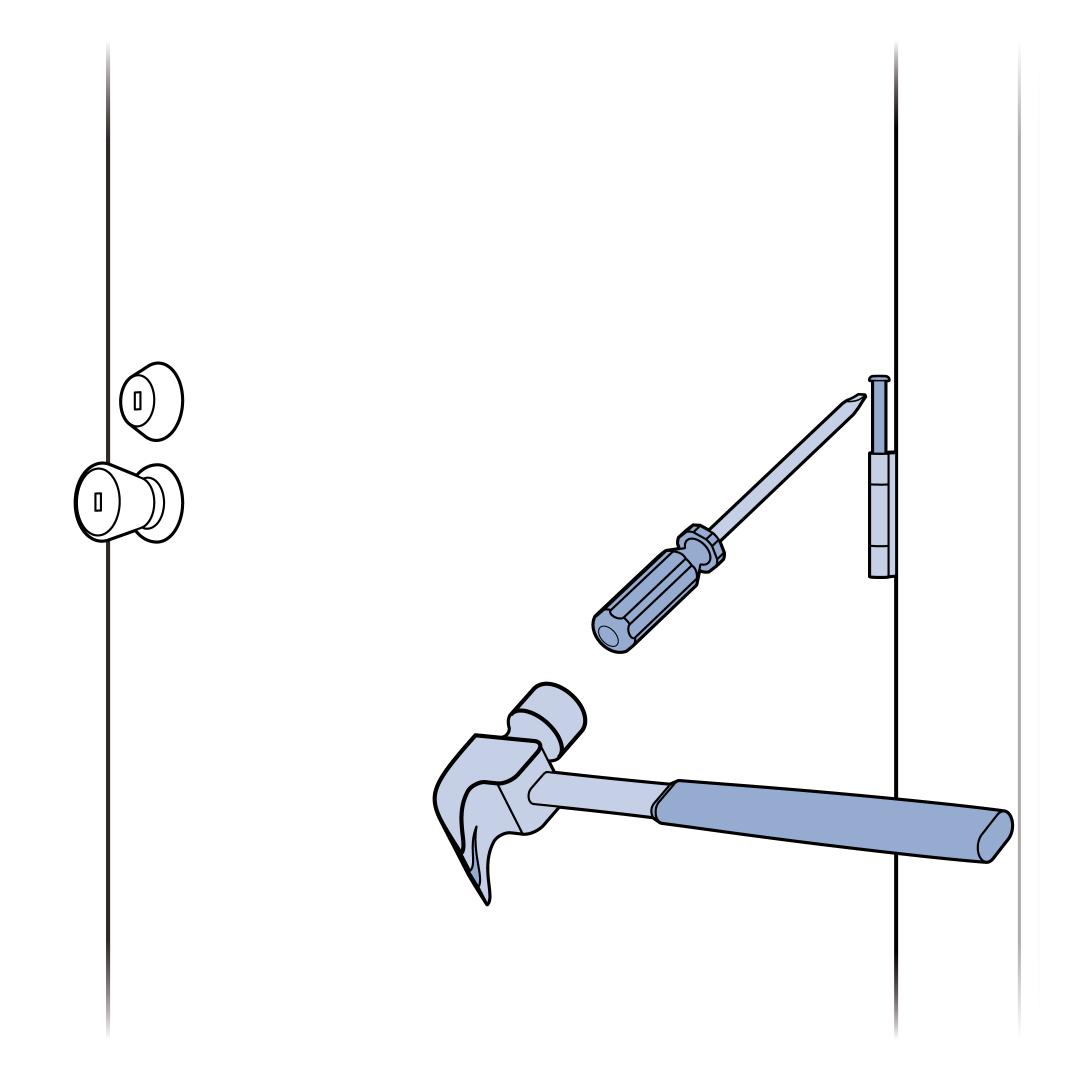
To remove the door from the frame, remove the pins for the hinges using a flathead screwdriver and hammer.

Place the door, interior side up, on a raised level surface suitable for drilling and cutting, such as a pair of sawhorses. Clamp or weigh down the door to prevent it from moving.
Cut the Cat Door Opening
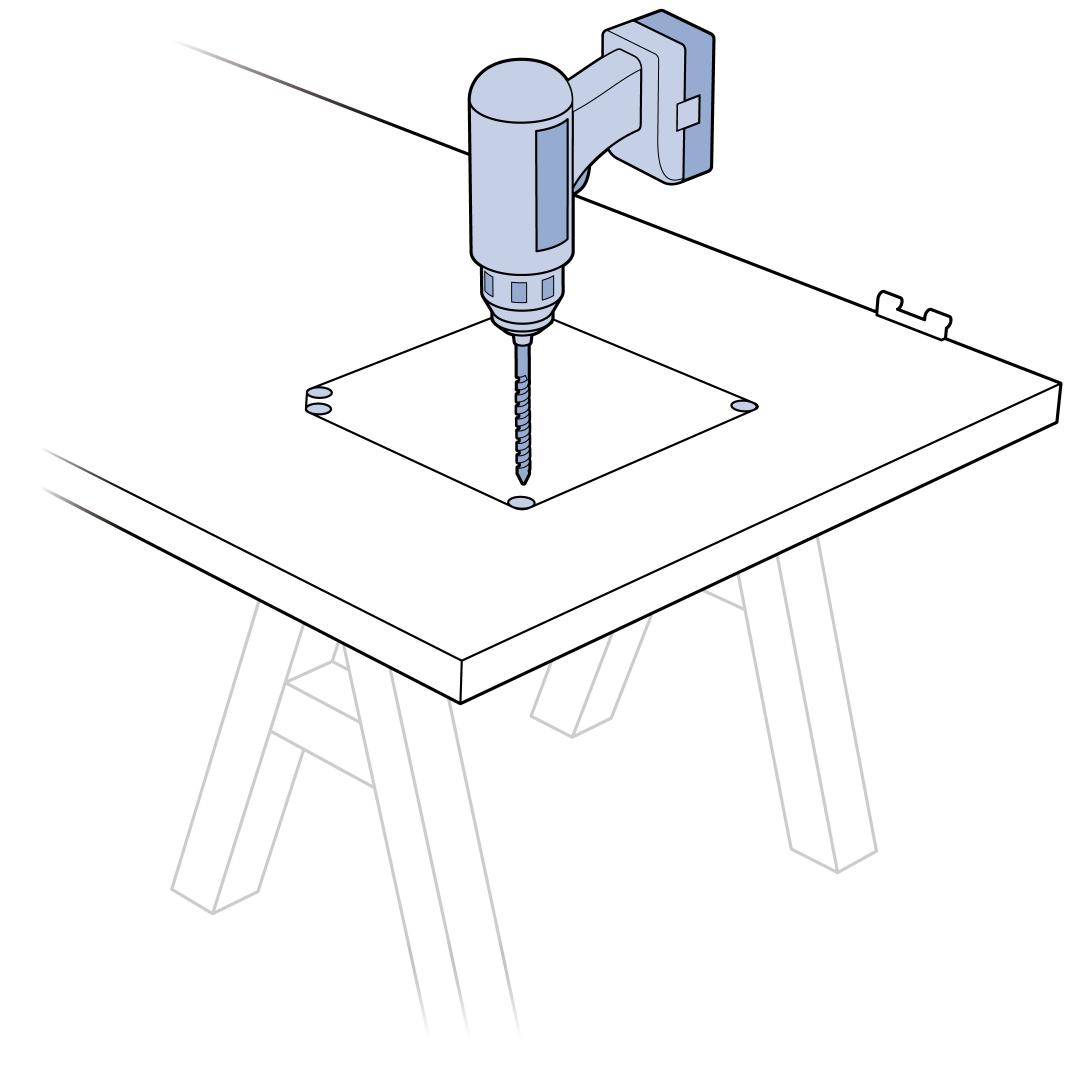
Ensure the area underneath where you have marked for removal is clear before drilling and cutting.
Drill 1/8-inch pilot holes at the center of the circles in each corner of the outline. These pilot holes will help center the drill bit for the subsequent larger holes; they do not need to go all the way through the door. Hold the drill steady at a 90-degree angle to the door.
Switch to the 1/2-inch drill bit and, centering the drill bit in the pilot holes you just drilled, drill holes through the door. Hold the drill steady and straight at a 90-degree angle to the door.
These large holes will be the pilot holes for the jigsaw blade.
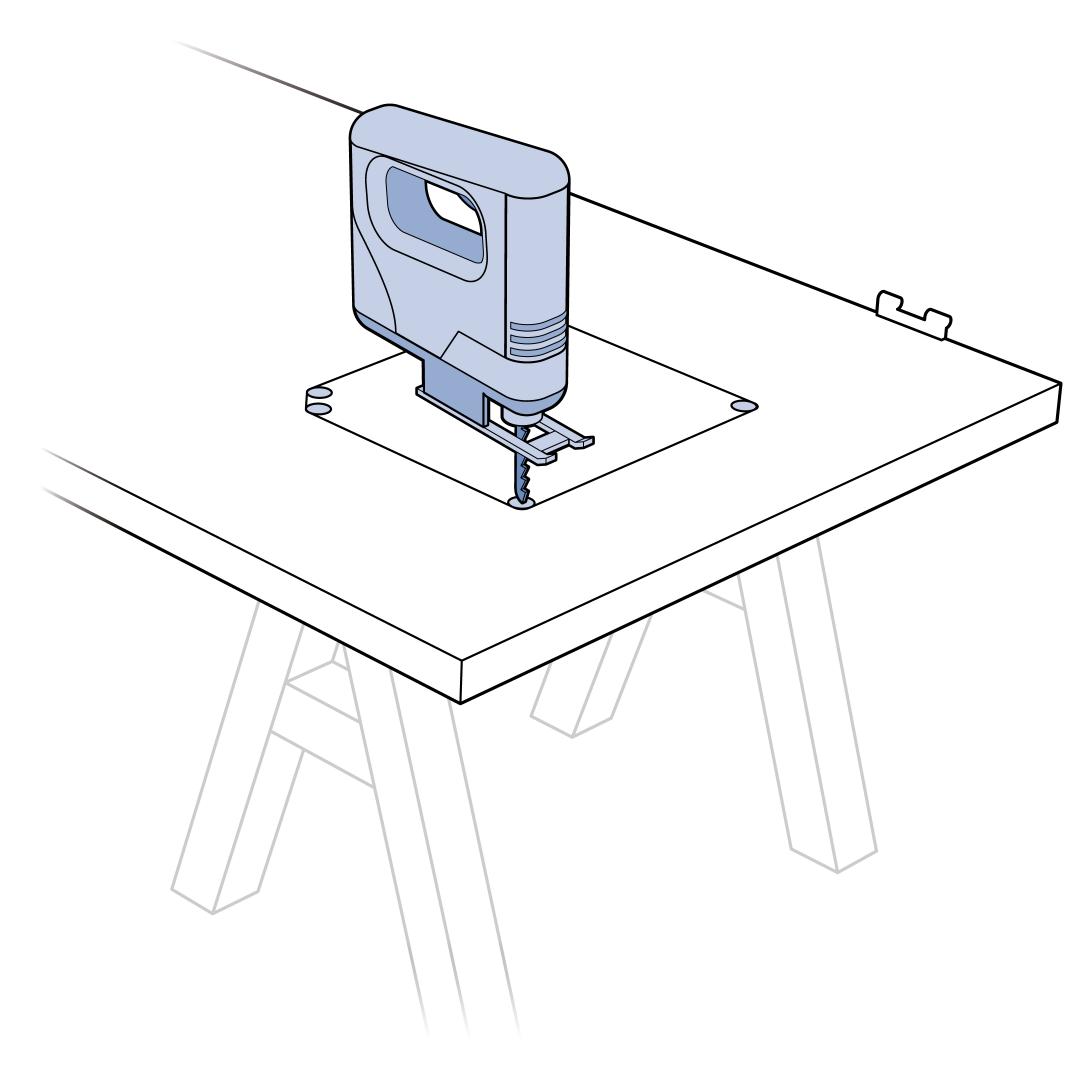
Remove the template and tape, then place the jigsaw blade into a corner hole. Make sure the blade goes entirely through the door and cut along the marking. Continue until an opening is made.
You may need to finely trim area to ensure a good fit.
Install the Frame
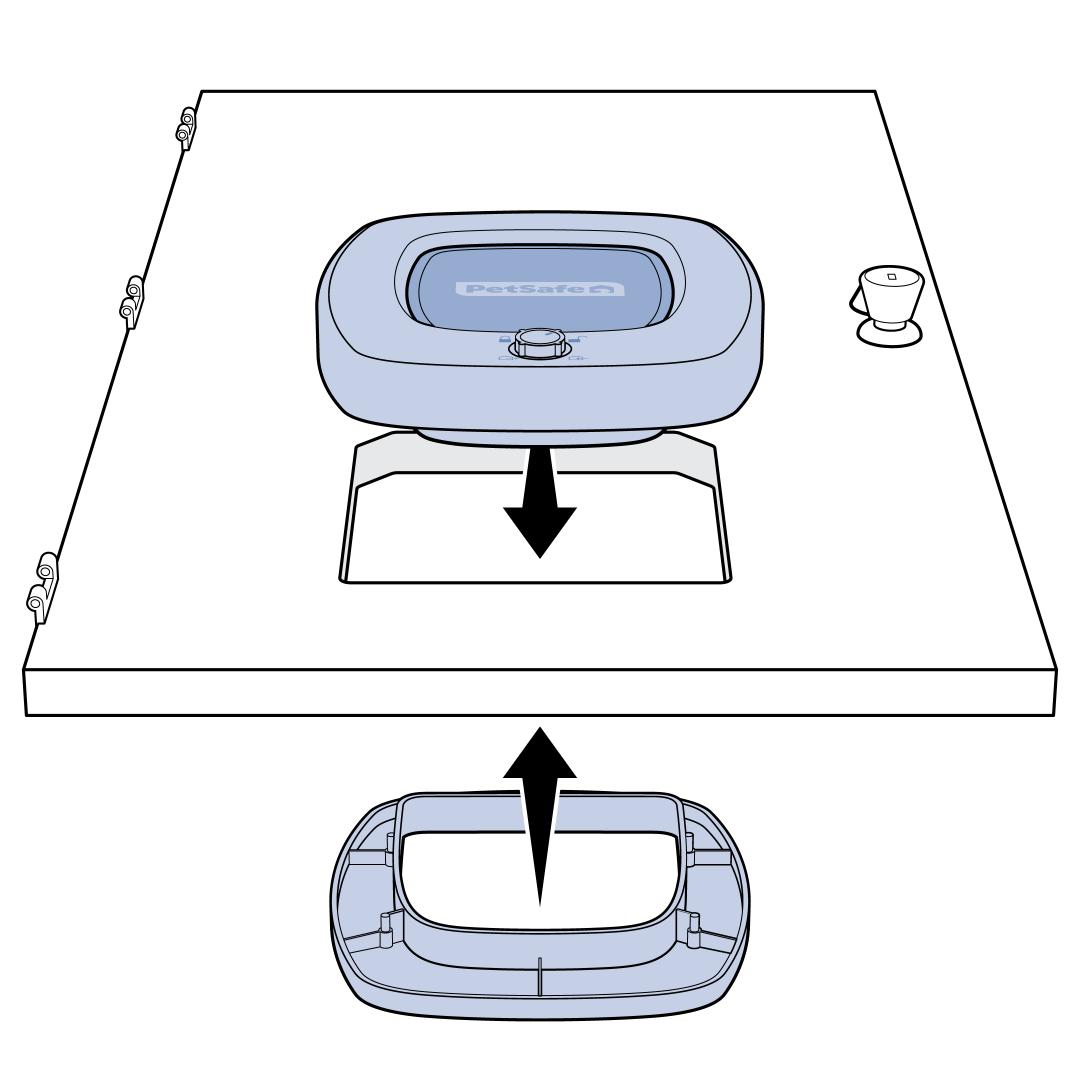
Check the fit of the frames in the opening. Place the interior frame into the cutout from the interior side of the door. Then, place the exterior frame into the underside of the door, aligning the core covers into tabs of the exterior frame. If either frame does not easily fit inside the opening, you may need to make adjustment cuts to the opening before proceeding with installation.
If you removed your door from its hinges, rehang it now.
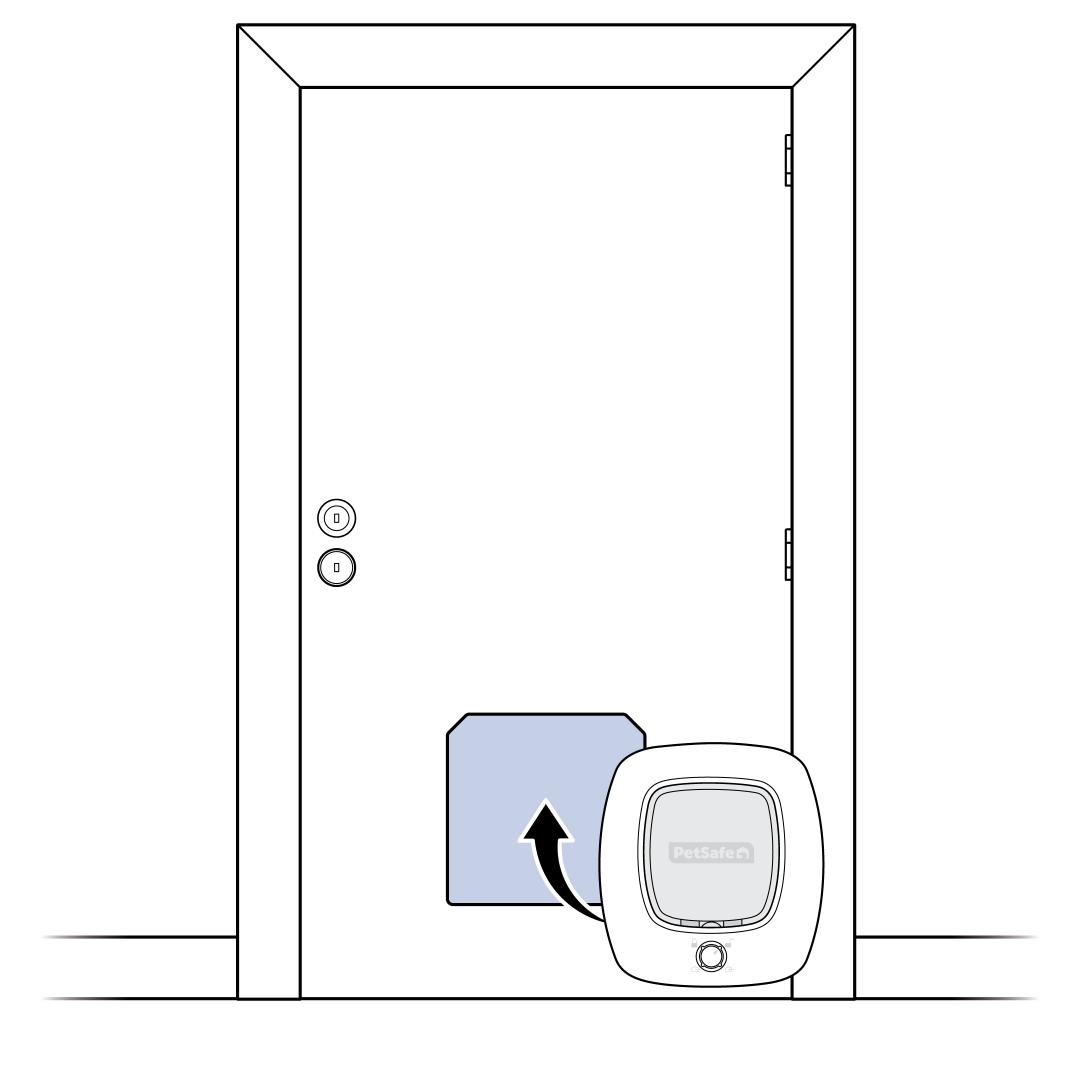
Insert the interior frame into the opening on the interior side of the door. Have someone hold it or tape it in place while you place the exterior frame on the exterior side of the door.
Holding both frames in place, insert screws through the holes on the exterior frame to the holes on the back of the interior frame.
- If the door thickness is between 1 inch (25mm) and 1 ¼ inches (35mm), use the 2 ¼ inches (70mm) screws.
- If the door thickness is between 1 ¼ inch (32mm) and 2 inches (51 mm), use the 2 ¾ inches (70mm) screws.
Make sure the cat door is level in the opening and then tighten the screws with a Phillips screwdriver. Do not over-tighten.

Once you have tightened the screws, it is very important to check the cat door one more time to ensure it is level and the flap opens and closes freely.
Insert the two flat blanking plugs into the lower holes.
Insert the two contoured blanking plugs into the upper holes.

If you installed the cat door in an exterior door, weatherproof your installation by applying exterior-grade caulk around where the edge of the cat door tunnel meets the exterior frame, and where the exterior frame meets the door.
Do not caulk over the weep hole at the bottom of the exterior frame.
Contact Customer Care
If you need further assistance, please contact our customer care team.